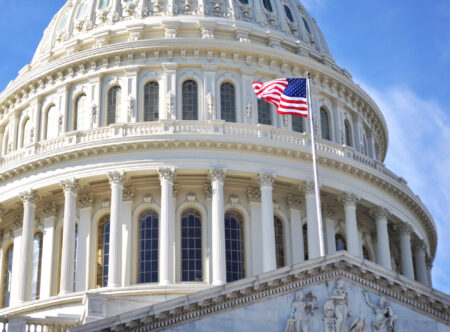What happened this week around blockchain and cryptocurrencies? The most relevant local and international events as well as appealing background reports in a pointed and compact weekly review.
Selected articles of the week:
In the United States, there are various regulatory agencies for the financial sector. The Securities and Exchange Commission (SEC) oversees securities trading, while the Commodity Futures Trading Commission (CFTC) is responsible for commodity trading. Due to the lack of legal classification for digital assets, the two agencies have been in a dispute over jurisdiction in this area. SEC Chairman Gary Gensler argues, using the Howey test introduced in 1933, that all cryptocurrencies except Bitcoin should be classified as securities. In contrast, the CFTC regulates some digital assets as commodities. To avoid waiting for a legal precedent, the SEC, under Gensler’s leadership, has employed a strategy that industry insiders refer to as “regulation by enforcement.” Instead of defining clear guidelines, the agency takes legal action against companies it considers within its jurisdiction. Some of the largest crypto companies in the US have been targets of this enforcement action, yet the SEC has not prevented any of the multi-billion-dollar bankruptcies in the past year. Even within the agency, there is growing criticism of this questionable crypto strategy. SEC Commissioner Hester Peirce has criticized the agency’s recent actions in a scathing blog post, stating that they have a negative impact on the US economy. By applying ancient regulations to new technologies and interpreting these principles in a dubious manner, the SEC stifles important innovations in financial markets: “Thank you, Mr. Chair. […] Rather than welcoming the promise of new technology – as we have done in the past – here we propose to embrace stagnation, force centralization, urge expatriation, and welcome extinction of new technology. Accordingly, I dissent.”
Criticism of SEC Chairman Gary Gensler’s harsh crypto policy is growing within different departments of the US legislation.
A clear legal framework is important for an emerging industry because it creates a clear framework for companies and investors. This reduces uncertainty in a market, ultimately promoting growth and innovation. In the United States, the legislature (Congress) is made up of two chambers: the House of Representatives and the Senate. These in turn act through subcommittees that specialize in various parts of legislation. The House Committee on Financial Services is responsible for financial oversight and sets the core competencies of subordinate regulatory agencies and proposes new financial laws to the US Congress. In a first step, the Financial Services Committee of the House has presented a draft law to regulate stablecoins this week. Under the bill, the Federal Reserve Bank would regulate stablecoin issuers such as Circle and Tether. Companies would be required to commit to transparency and maintain one hundred percent coverage at all times. In addition, research on a digital dollar (CBDC) would be legally accelerated. The bill will now go through a series of steps, including hearings in committees, debates, and votes, before being signed into law by the president and taking effect.
A U.S. bill seeks to impose a moratorium on stablecoin issuers without a U.S. banking licenses and criminalize decentralized alternatives.
Since 2019, the European Union has been working on its first comprehensive crypto legal framework: Markets in Crypto-Assets (MiCA). The framework covers areas such as transparency, disclosure, approval, and monitoring of transactions by service providers and aims primarily to create a unified approach across all 27 member states. The legislation was adopted in Strasbourg this week with 517 votes in favor, 38 against, and 18 abstentions. European decision-makers want the MiCA framework to create a standard regulation for harmonized crypto rules, providing legal certainty for crypto assets in the European Economic Area. After approval by the European Council, the regulation will be officially recorded as EU law. The securities regulator ESMA will then issue guidelines for the application of the regulation. Some provisions on stablecoins will effectively come into force from July 2024, while the majority of the MiCA regulation will not take effect until January 2025.
The European Parliament has approved the MiCA legislation, aiming to create a single legal framework for cryptocurrencies.
Mt. Gox, including its fatal end in 2014, made history in the industry. The cryptocurrency exchange was one of the first in the space and dominated the market with a volume share of up to 80%. The success story came to an abrupt end with increasing technical problems, coupled with a devastating hack. Following the declaration of bankruptcy, around $4 billion in cryptocurrencies were secured for the creditors. However, the payout of the funds has taken almost a decade. New announcements by the trustee suggest that the first payouts will be made by this fall. An on-chain analysis of the events.
Mt. Gox’s long-awaited bitcoin repayments to the exchange’s creditors are due by October 2023; an on-chain analysis.
Additionally: Smart contract platforms are blockchain-based protocols that enable the creation and execution of self-executing digital programs (smart contracts) without intermediaries. These networks enable the automation of various financial transactions, making them faster, more efficient, and more secure. However, these platforms can encounter scaling problems due to the limited processing power of the underlying blockchain technology. Layer 2 solutions are technologies that aim to solve these scaling problems by processing transactions outside of the main blockchain. Arbitrum has emerged as a leading network. Since its debut in the summer of 2021, the Layer 2 solution has been home to a thriving ecosystem of DeFi applications that has grown into the billions mostly organically.
Arbitrum is a rapidly growing scaling solution for the Ethereum blockchain. An overview of the history and future of the network.









